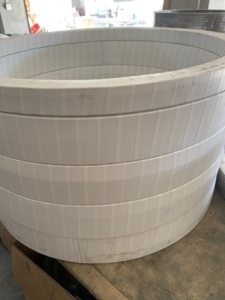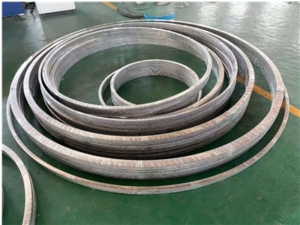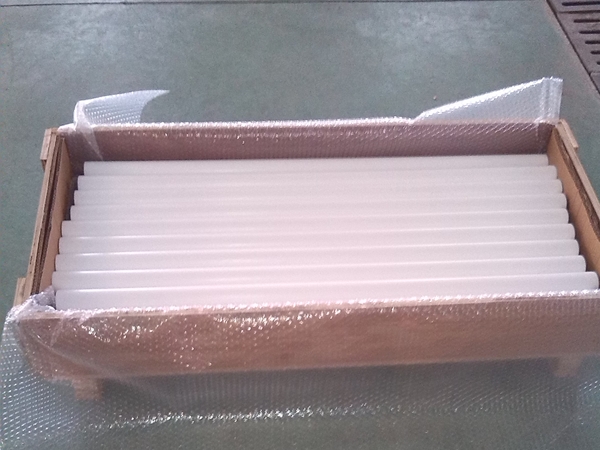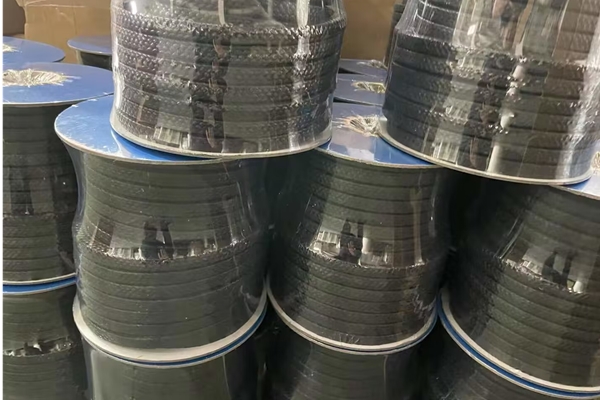In petrochemical, metallurgy, and nuclear plants, bolted flange connections rely on gaskets to prevent leaks in pressure vessels and piping. Under high-temperature and high-pressure conditions, the sealing performance and reliability must be exceptional. Any leakage from these joints not only wastes resources but also pollutes the environment. In the worst-case scenario, it can lead to fires or explosions, endangering personnel and causing significant economic loss. A major cause of leakage in these applications is the thermo-mechanical instability of certain gasket constructions. Their properties can vary significantly with changes in temperature and pressure, compromising sealing integrity. Therefore, it is essential to design gaskets that exhibit stable sealing behavior at high temperatures for reliable bolted-flange connections.
To solve this issue, we introduce a metal jacketed flat gasket designed for high temperatures and high pressures, along with its manufacturing method. This design improves resistance to heat, pressure, corrosion, and oxidation, ensuring stable performance and a long service life. Additionally, it has the potential for multiple reuses, making it suitable for widespread industrial applications.
Construction and materials (industry formulation, by weight)
The gasket comprises a filler encapsulated in a metal jacket. The filler is formulated as follows (parts by weight):
Flexible graphite: 100
Tannic acid: 3–7
Methyl acrylate: 0.5–1
Composite fibers: 3.5–15
Polyvinylidene fluoride (PVDF): 1.5–5
Composite polyhedral oligomeric silsesquioxane (POSS): 6–15
Metal jacket: 316 or 316L stainless steel thin sheet.
Functional additives and synergy
1)Composite POSS (synergistic flame-retardant/anti-oxidation system).
First, octachloropropyl-POSS is prepared via hydrolysis. It is then ionized by reaction with an N-alkyl tertiary amine. Subsequent anion exchange with salts bearing different anions—e.g., sodium tetrafluoroborate (NaBF₄), potassium hexafluorophosphate (KPF₆), or lithium bis(trifluoromethanesulfonyl)imide (LiTFSI)—yields POSS microspheres with various counter-anions, achieving POSS/ionic-liquid synergy for flame retardancy.
2)Composite POSS definition.
A 1:1 mass mixture of octavinyl-POSS and ionic-liquid-containing octaphenyl-POSS.
In octavinyl-POSS, all eight cage vertices carry vinyl groups.
In octaphenyl-POSS, all eight vertices carry 4-(chloromethyl)phenyl substituents.
3)Fiber and matrix modification.
Silicon carbide fibers and ceramic fibers are surface-modified and combined with flexible graphite to deliver high temperature/pressure resistance. PVDF is graft-modified using octavinyl-POSS to enhance inorganic–organic interfacial adhesion, suppress particle agglomeration, and strengthen the two-phase interface—raising allowable service temperature and pressure.
Ionic-liquid functionalized octaphenyl-POSS further elevates oxidation and corrosion resistance and increases thermal stability via POSS/ionic-liquid cooperation.
Composite fiber blend: 3–12 parts SiC fibers + 0.5–3 parts ceramic fibers (within the 3.5–15 parts total fiber window).
Preparation of ionic-liquid-containing octaphenyl-POSS (process S1–S5)
1). Charge methanol to a reactor; under magnetic stirring, add 4-(chloromethyl)phenyltrimethoxysilane and hydrochloric acid.
2) Heat to 80 °C and reflux 24 h.
3). After reaction, add tetrahydrofuran (THF) for recrystallization.
4). Wash with methanol and vacuum-dry at 50 °C for 24 h to obtain octaphenyl-POSS.
5). Combine the product from Step 4 with a mixed solution of ammonium tetrafluoroborate, 1-(3-chlorophenyl)-3-methyl-piperazine, and toluene. Stir the mixture at 70 °C for 12 hours under isothermal and magnetic conditions. Vacuum filter the resulting mixture to obtain the ionic-liquid-containing octaphenyl-POSS..
Ratios and conditions:
Methanol: 4-(chloromethyl)phenyltrimethoxysilane: HCl (volume) = 100 : 3–15: 1–10.
Ammonium tetrafluoroborate: 1-(3-chlorophenyl)-3-methyl-piperazine: octaphenyl-POSS (molar) = 1.1–1.3: 1.1–1.3: 1.
Toluene: octaphenyl-POSS (volume: mass) = 5–20: 1 ml/g.
Manufacturing method for the high-temperature, high-pressure metal jacketed flat gasket
1. Fiber Modification via Supercritical CO₂:
Charge 3.5–15 parts of composite fibers into a reactor. Introduce CO₂ and raise the temperature and pressure to achieve supercritical conditions for 1–15 minutes to swell the fibers. Depressurize the system and add 2–5 parts of composite POSS. Reintroduce CO₂ and maintain supercritical conditions for an additional 5–10 minutes to obtain the modified composite fibers. The use of supercritical CO₂ enhances swelling and penetration, ensuring that the POSS uniformly permeates the interior of the fibers.
2. Filler Mixing (High-Shear Dispersion):
Combine the following materials by weight: flexible graphite (100 parts), tannic acid (3–7 parts), methyl acrylate (0.5–1 part), PVDF (1.5–5 parts), composite POSS (4–10 parts), and the modified composite fibers obtained from step 1. High-speed mechanical mixing improves the dispersion and bonding of inorganic and organic materials, enhancing performance under high-temperature and high-pressure conditions. (Note: The overall formulation allows for composite POSS to be included at 6–15 parts, as specified above.)
3. Jacket Forming and Encapsulation:
Place a punched, flanged, roughened stainless steel 316/316L thin sheet into a mold. Lay the filler material onto the metal sheet, then press, roll, and hem the jacket edges to create the metal-jacketed flat gasket.
Preferred Pressing Conditions: 50–60 °C, 15–20 MPa, for 5–10 minutes.
What this design delivers
High-temperature & high-pressure capability. Flexible graphite + ceramic fibers, reinforced by POSS-grafted PVDF, provide a filler with excellent strength at temperature and under load.
Anti-oxidation & corrosion resistance. The ionic-liquid-containing POSS system cooperates with the graphite matrix to improve oxidation resistance and chemical durability.
Stable properties & long life. Strong chemical bonding among organic and inorganic components yields a stable, reusable filler system with extended service life in severe duty.
316/316L stainless jacket. Corrosion-resistant, oxidation-resistant metal cladding protects the filler, spreads load, and safeguards flange faces.
Typical use cases
Designed for high-temperature, high-pressure, and corrosive flange joints in refining, petrochemical, chemical processing, metallurgy, and nuclear services—where leakage control, uptime, and safety are paramount.
Conclusion
By combining a 316/316L stainless jacket with a graphite-based, POSS-reinforced filler—modified via supercritical CO₂ processing and ionic-liquid chemistry—this metal jacketed flat gasket provides reliable sealing under severe temperature and pressure, with enhanced oxidation/corrosion resistance, stable performance, and extended service life suitable for large-scale industrial deployment.






